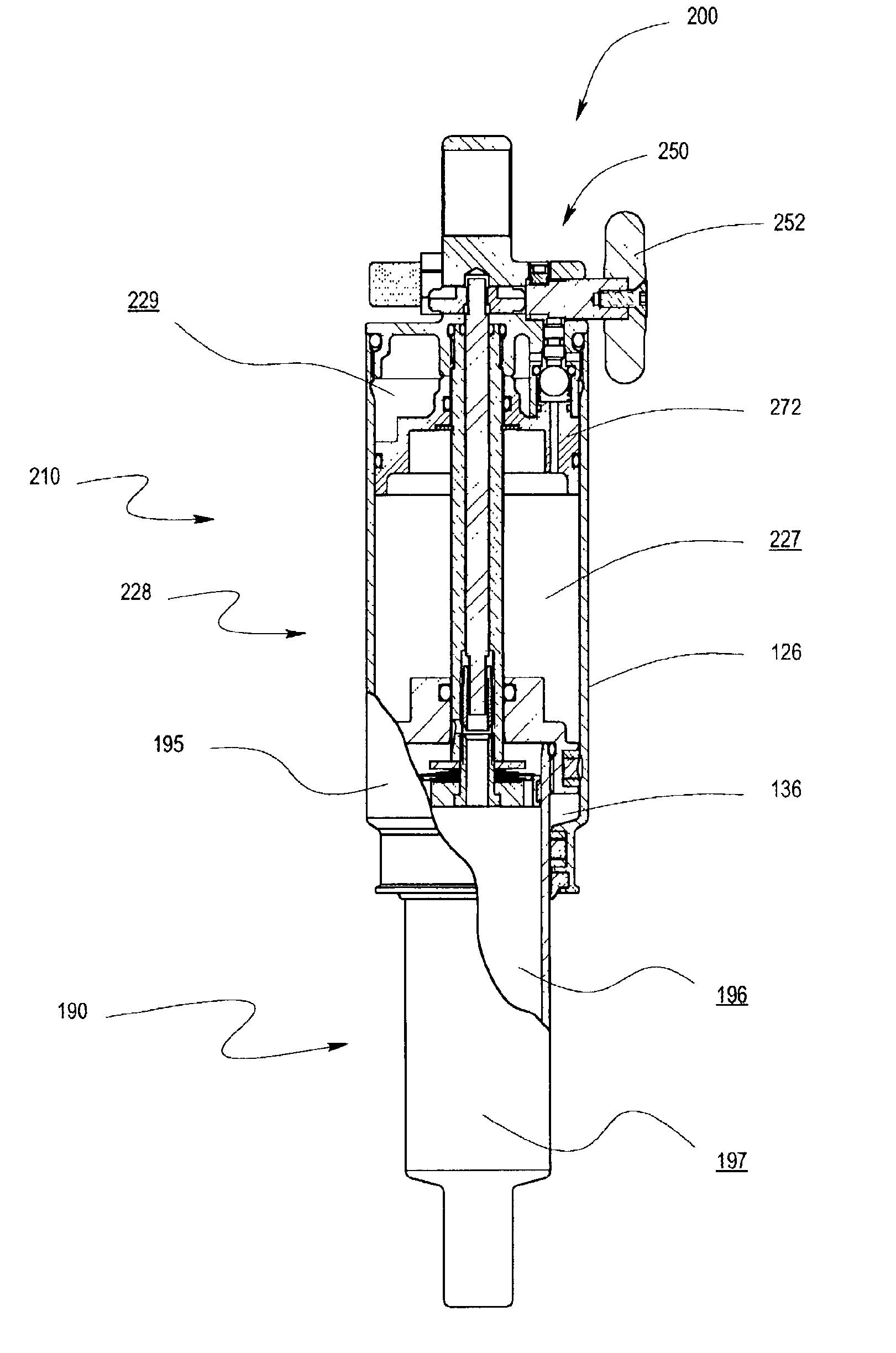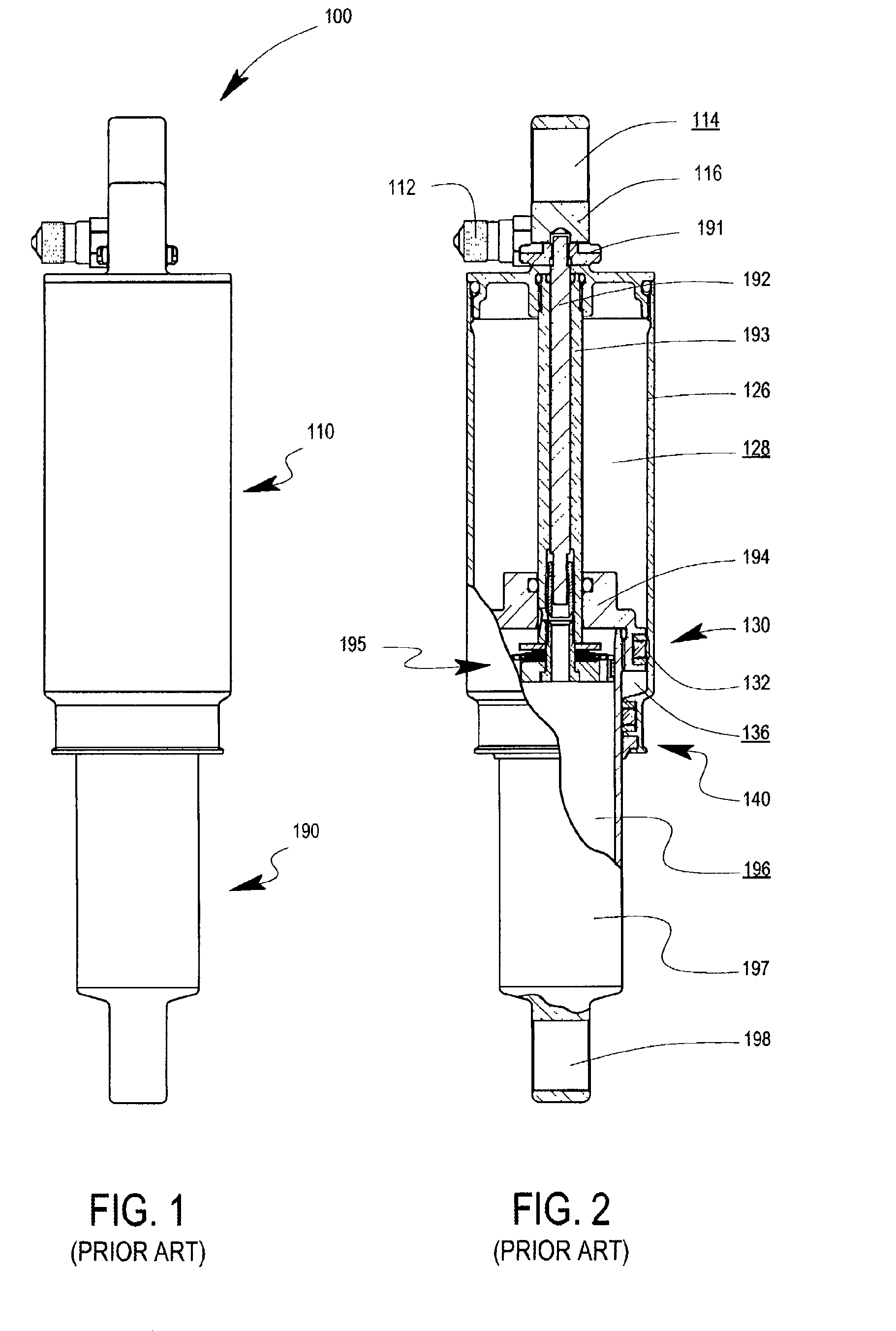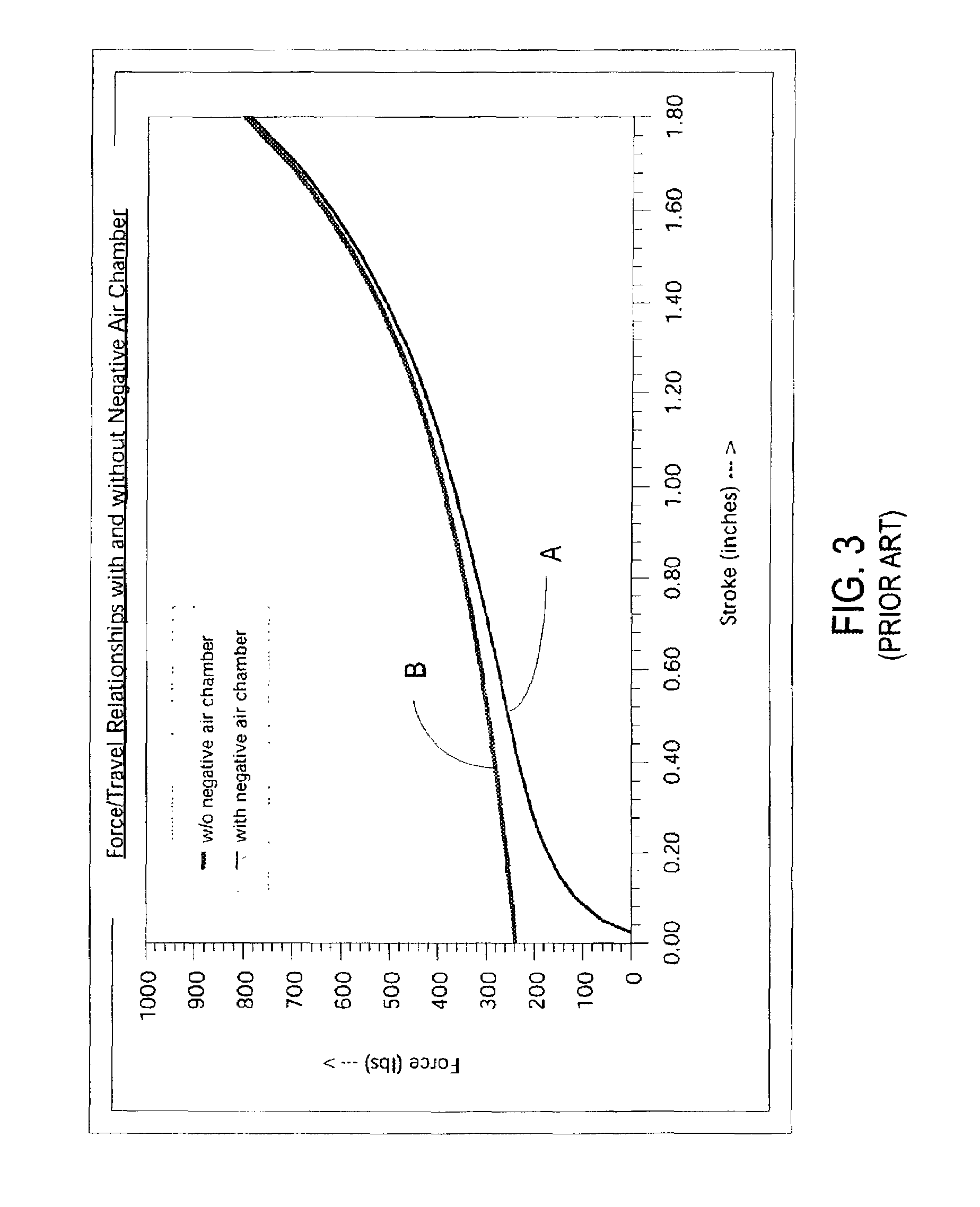Integrated and self-contained suspension assembly having an on-the-fly adjustable air spring
- Summary
- Abstract
- Description
- Claims
- Application Information
AI Technical Summary
Benefits of technology
Problems solved by technology
Method used
Image
Examples
Embodiment Construction
[0034]The prior-art integrated suspension unit 100 of FIGS. 1 and 2 will be described first, in order to provide a point of departure for better understanding the improvements of the preferred embodiments, which will be described further on.
[0035]The typical prior-art integrated suspension unit 100 as shown in FIGS. 1 and 2 is manufactured by Fox Racing Shox. It is to be understood, of course, that this specific prior-art embodiment is representative only, and that the present air spring arrangement can be applied to other types of suspension units. Additionally, the present air spring arrangement can be applied as a separate air spring unit, not integrated with a damper.
[0036]In FIGS. 1 and 2 the integrated suspension unit 100 is comprised of an air spring assembly 110 and a damper assembly 190. The integration is seamless, with several of the components such as an upper eyelet housing 116 and seal head 194 shared by both assemblies and performing dual functional roles. For example...
PUM
 Login to View More
Login to View More Abstract
Description
Claims
Application Information
 Login to View More
Login to View More - R&D
- Intellectual Property
- Life Sciences
- Materials
- Tech Scout
- Unparalleled Data Quality
- Higher Quality Content
- 60% Fewer Hallucinations
Browse by: Latest US Patents, China's latest patents, Technical Efficacy Thesaurus, Application Domain, Technology Topic, Popular Technical Reports.
© 2025 PatSnap. All rights reserved.Legal|Privacy policy|Modern Slavery Act Transparency Statement|Sitemap|About US| Contact US: help@patsnap.com



